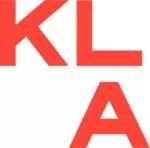- within Finance and Banking topic(s)
- in United States
- within Accounting and Audit topic(s)
New rule allows the linkage of book-entry invoices and real estate receivables to dynamic payment slips, enhancing security
On Wednesday, the 23rd, Normative Instruction BCB No. 611/2025 was published, establishing the linkage of dynamic payment slips to book-entry invoices and real estate receivables. This measure is expected to provide greater liquidity, legal certainty, and enforceability to these financial assets, thereby contributing to the dynamism of the banking and capital markets.
The dynamic payment slip, used for billing and payment of debts arising from obligations of any kind, is a payment arrangement that allows for changes to both the recipient institution and the beneficiary—who becomes the holder of the related rights. The term “recipient institution” refers to the financial or payment institution that is a creditor of the receiving institution and a debtor of the beneficiary during the settlement of transactions involving the payment slip.
The following financial assets may be linked to these dynamic payment slips:
- Book-entry invoices, as defined under Law No. 13,775/2018;
- Real estate receivables arising from purchase and sale agreements or promises to buy and sell, with or without the issuance of real estate credit notes, entered into between a developer or land developer and a buyer or prospective buyer of an autonomous real estate unit or lot.
According to BCB Resolution No. 443/2024, the dynamic payment slip linked to these assets must include, among other details:
- Identification of the bookkeeping agent where the asset is recorded, or, in the absence of bookkeeping, identification of the registration system or central securities depository where it is registered or deposited;
- Identification of the recipient institution;
- And qualification of the rights holder.
To issue a dynamic payment slip, the beneficiary must have a contractual relationship with the bookkeeping agent, the registration entity, or the central depository, as applicable, for the bookkeeping, registration, or deposit of the linked assets—of which the beneficiary must also be the original creditor.
Issuing institutions must electronically provide information related to the payment slips to the bookkeeping, registration, or centralized deposit systems with which the beneficiary maintains a contractual relationship, for the purpose of notifying them of the issuance and linkage to the financial asset.
Finally, the implementation schedule for dynamic payment slips for each type of financial asset must be agreed upon between the settlement system operator responsible for the centralized payment slip database and the operators of the bookkeeping, registration, or centralized deposit systems. This schedule must be submitted to the Central Bank of Brazil within the deadlines and in the manner to be defined by the authority.
The content of this article is intended to provide a general guide to the subject matter. Specialist advice should be sought about your specific circumstances.


